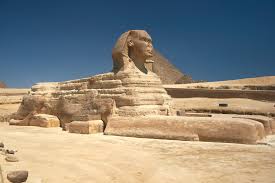The concept of monarchy originated in prehistoric times and evolved over centuries right up to the present. There is no civilization living today which did not originate in the work and effort of Monarchy. The first states were mostly monarchies. They were ruled by kings or queens. The earliest monarchies that we know about are the ones in Sumer and Egypt. These both began around 3000 BC.

It is true that there have been many more men in power than women, but there have always been women rulers too. There were women who ruled Egypt, like Hatshepsut and Cleopatra. Throughout history, royal dynasties have dominated countries and empires around the world.
Ancient Egypt was an ancient civilization of eastern North Africa, concentrated along the lower reaches of the Nile River in what is now the modern country of Egypt. The civilization united around 3150 BC with the political unification of Upper and Lower Egypt under the first pharaoh, and it developed over the next three millennia. Its history occurred in a series of stable Kingdoms, separated by periods of relative instability known as Intermediate Periods.
Ancient Egypt reached its pinnacle during the New Kingdom, after which it entered a period of slow decline. Egypt was conquered by a succession of foreign powers in this late period. The rule of the pharaohs officially ended in 31 BC when Egypt fell to the Roman Empire and became a Roman province.
Pharaoh
The term pharaoh, pr-aA literally means great house. In the sense of palace, goes back to the Old Kingdom. As part of the royal titular, it came into use only in the early first millennium BCE, in monumental inscriptions possibly as late as the reign of Sheshong III.
Ideally, for most of Egyptian history, one should not refer to the king as pharaoh, but as the kingship remained basically unchanged for millennia until the advent of Christianity and the abandonment of the traditional worldview, referring to this intrinsically Egyptian institution as pharaonic can be considered reasonable, even if at times it sounds a bit outdated.
Majesty Loves
The pharaohs were often referred to as nswt, translated as ‘King’, and Hm, rendered as ‘Majesty’. Thus the official Sia-Khufu described himself in a rock inscription in the Upper Egyptian Eastern Desert as jrj-jx,t-nsw.t (custodian of the king’s property)
jrr mrrt Hm=f (who does what His Majesty loves)
A Pharaoh was the Ancient Egyptian equivalent of a king (although Queen Nefertiti became the first female Pharaoh). Pharaohs were considered to be Gods in human form, so people respected, obeyed and feared them. They had much more power over the land that the queen has over England today, and what they said had to be done.
According to tradition, incestuous marriages between the pharaohs and their sisters were common. If this was the case, it could have been done to emulate the god Osiris and his sister/wife the goddess Isis and/or to keep the sacred bloodline pure.
On the other hand, the historical record for a lot of Egyptian antiquity is spotty and open to interpretation; some would argue that this tradition is based on a modern misreading of inscriptions while others claim that brother-sister unions were usually symbolic and that other concubines were the mothers of the pharaohs’ offspring.
Some Famous Pharaohs were:
Akhenaton (1375-1358 B.C) was the first ruler in recorded history to believe in the concept of One God. He also taught this concept to all his citizens. He built a new city in the desert that was dedicated to religion, art, and music. This new city was known as Akhenaton
Ramses II (the Great) was one of the most prolific builders of ancient Egypt. Some of the greatest monuments which have been created by him were: Abu Simbel, Karnak and Luxor Temples, the Ramesseum, and many others. He also commissioned the largest monolithic statue ever, a seated statue of himself at the Ramesseum.
Tutankhaten became pharaoh after the death of Smenkhkare and became one of the history’s most famous royalties. Tutankhaten became pharaoh at the age of nine. He married Ankhesenpaaten and ruled from Akhetaten. His tomb is one of very few that have been discovered almost untouched by thieves.